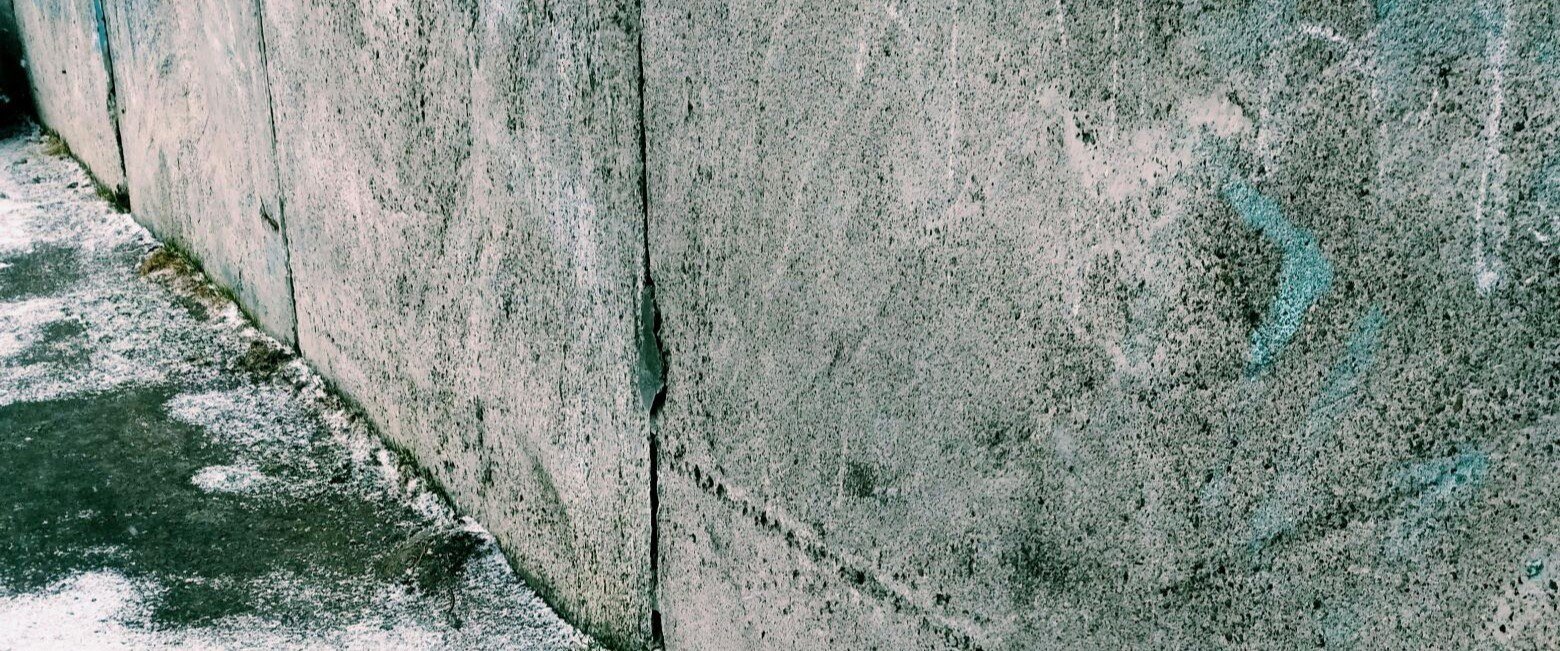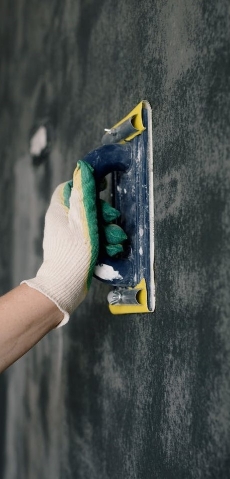Cold-Weather Concreting Tips for Protection & Repair
8 minutes read

In many major Northeast and Mid-Atlantic cities, concrete construction season is fleeting. Your window of opportunity for ideal working conditions is about 8 months – April 1 to Nov. 30.
That’s, of course, due to the many construction challenges these U.S. regions face in and around winter: loss of productivity, maintaining key personnel, and mistakes due to rushing toward completion.
The products themselves can become a risk too, as low-temperature concrete repair and protection becomes more perilous the further you go below 40 °F. But what if the right products and techniques could extend the season another 25% or more?
By knowing the whens, hows, and whats of product use, your cold-weather concreting protection plan will make your project, rather than break it.
Why Invest in a Cold-Weather Concreting Protection Plan?
Sure, you could stick with what you’ve already bought or what’s cheapest. But if you’re serious about efficiency, consider the long-term benefits of all-weather and low-temperature concrete sealers, adhesives, and more:
- Add months to construction season: Finish jobs sooner, move on to the next, and make more money.
- Meet the owner’s schedule: Projects can start when the customer is ready, rather than waiting until spring.
- Keep workers working: Avoid mid-project crew turnover by finishing jobs before winter stoppage.
That’s some serious value and efficiency for multiple areas of your operation.
|
When to use low-temp products: If for 3 days straight, the average daily temperature is below 40°, and the air has failed to sustain 50°+ for more than half a day in any 24-hour window of those 3 days. |
When to Use Low-Temp Concrete Coatings
The first and most apparent cold weather coating issue is low substrate temperatures. Most chemical reactions slow as temperatures drop, including water or solvent evaporation and the curing of coatings.
Five tips to keep in mind when applying epoxy coatings in cold weather:
- Warm the resin & hardener before use
- Ensure proper mix ratio
- Mix the resin & hardener thoroughly
- Fully warm the surface & environment
- Carefully prep the surface before reapplication
Before applying any product to a concrete surface, check the coating’s data sheet for temperature limits. Just like with concrete patch, if temperatures drop too low, curing of your coat could stop, slow, or sustain irreversible damage.
Conditions at the time of application are only part of the equation. Be sure to consider the concrete's curing period as well.
Mixing an epoxy resin and a hardener causes a chemical reaction that produces heat. Both the ambient temperature and the concrete’s temperature affect the epoxy’s rate of reaction and degree of cure. If you apply coating in cooler temperatures, the epoxy may look hardened to the naked eye. In reality, it won’t completely cure or reach its intended physical properties – leading to premature failure.
When to Use All-Weather Concrete Patch
Patching concrete in cold weather involves staying warm and being willing to wait.
You’re probably generally aware of the effect of low temperature on concrete strength. With proper protection and curing, concrete applied during cold temperatures can develop higher ultimate tensile strength and cracking resistance than concrete placed in warmer weather.
So you can throw commercial-grade concrete down in cold weather and call it a day, right? Not so fast.
The challenge of mixing and pouring concrete in cold weather comes when water in the cement mixture freezes. The moisture dramatically expands, causing cracks to form. This shatters the internal cement structure, especially toward the exposed surfaces.
Up to 50% permanent strength loss can occur if the cement freezes before curing. Short- and long-term durability will also fail to meet their potential.
Cold temps also slow concrete setting rates to a crawl. For every 10° difference from 75 °F, set time goes up by about one-third. Adjust your concrete cold-weather procedures accordingly.
How to Prevent Concrete Damage at a Cold Job Site
By taking certain measures – especially in the first 48 hours after placement – you can protect concrete from frost and freezing:
- DO protect the concrete until it achieves 500 psi in compressive strength.
- DON’T expose repair mortar, non-shrink grout, or concrete to multiple freeze-thaw cycles in wet conditions before reaching 3,600 psi.
- DO use electric curing blankets and other external heating sources to protect concrete from freezing
- DON’T apply mortar or similar products to frost-covered concrete.

What Other Low-Temp Construction Products Are Worth It?
By their very nature, some commercial construction products need to be weather-grade. An example is a primer for self-adhered membranes on air barriers – or anything that goes on liquid air barriers, really.
Below are more examples of low-temperature construction adhesives, waterproofing membranes, and other products relative to concrete winter weather protection.
(Pro Tip: It's not just the concrete that needs a safe environment -- store your protection and installation products in a warm place leading up to the job.)
PUMA Coating
PUMA-based coatings (polyurethane methacrylate) are usable in cold-weather concreting, unlike standard urethane products. Choose a PUMA system when you have high demands in turnaround time, durability, and general performance.
Think of PUMA as a nice, toasty winter coat for protecting concrete.
Example – TREMproof PUMA Horizontal System (Service temps: Down to 14 °F)
Silicone Sealants
Also unlike polyurethane, silicone sealant doesn't require preheating – thanks to its flexible polymer. That makes silicone excellent for sealing high-movement concrete in cold weather.
With no primer necessary, the material adheres easily to masonry, precast concrete panels, and expansion joints. Simply prepare the joint with a solvent, wiping away debris and moisture. (You may still want to perform adhesion testing.)
Example – DOWSIL 790 Silicone Building Sealant (Service temps: Down to -20 °F)
Sheet Waterproofing Membrane
The use of liquid-based waterproofing membranes can be challenging when winter's near due to their sensitive curing process.
To avoid this frustration, sheet-based HDPE (high-density polyethylene) films come with an aggressive, pressure-sensitive adhesive and a weather-resistant coat. The goal of these membranes is to seal concrete continuously between the membrane and the structure, preventing water ingress.
Example – Grace PREPRUFE 275 LT (Service temps: 25 to 95 °F)
Fluid-Applied Barriers
Even in low temperatures, synthetic polymer compositions make for a great air and vapor barrier (AVB) in exterior wall assemblies. A liquid-based barrier can manage air, vapor, and water for concrete blocks, general concrete, and many other common building materials.
For flexibility and cracking prevention in cold weather, consider a low-temp membrane. As a bonus, they work just fine in warm weather – no need to discard your leftover winter inventory.
Some AVB compositions are fire-retardant.
Example – Carlisle Fire Resist Barritech NP-LT (Service temps: Down to -20°F)
Rubberized Asphalt Membranes
These composite air, vapor, and water barriers are for use in above-grade wall assemblies. They work on general concrete, concrete masonry units, and other common construction materials. These AVBs' extreme tackiness helps them adhere to substrates in low temperatures.
Example – Carlisle CCW-705 XLT (Service temps: -25 to 149°F)
Self-Adhering Flashings
Also a rubberized composite, this product manages moisture in cavity wall construction. The system diverts water to the exterior at wall bases, shelf angles, windows, and parapet wall heads. Its self-adhesive nature allows for easy installation on masonry and other concrete.
Example – Carlisle CCW-705-TWF XLT (Service temps: 15 to 60 °F)
Self-Adhesive Tape
This two-sided, highly aggressive adhesive comes with a release liner. There are wider versions of the tape available for use on construction joints.
Example – Grace PREPRUFE Detail Tape LT (Service temps: 25 to 95 °F)
More Tips for Preserving Concrete in Any Weather
Good concrete makes you look good. Bad concrete makes you look bad. It’s pretty simple work, until Mother Nature gets involved.
If you fail to prep and protect concrete for its end-use environment, it can deteriorate and invite a host of other issues. By carefully planning out product use, applying them properly, and protecting them from the elements, your project will succeed – even below 40°. Above all else, invest in dedicated cold-weather concrete repair and protection products, rather than hoping your usual stuff gets you through the job.
For more tips on managing a concrete construction project, check out our full resource center:


